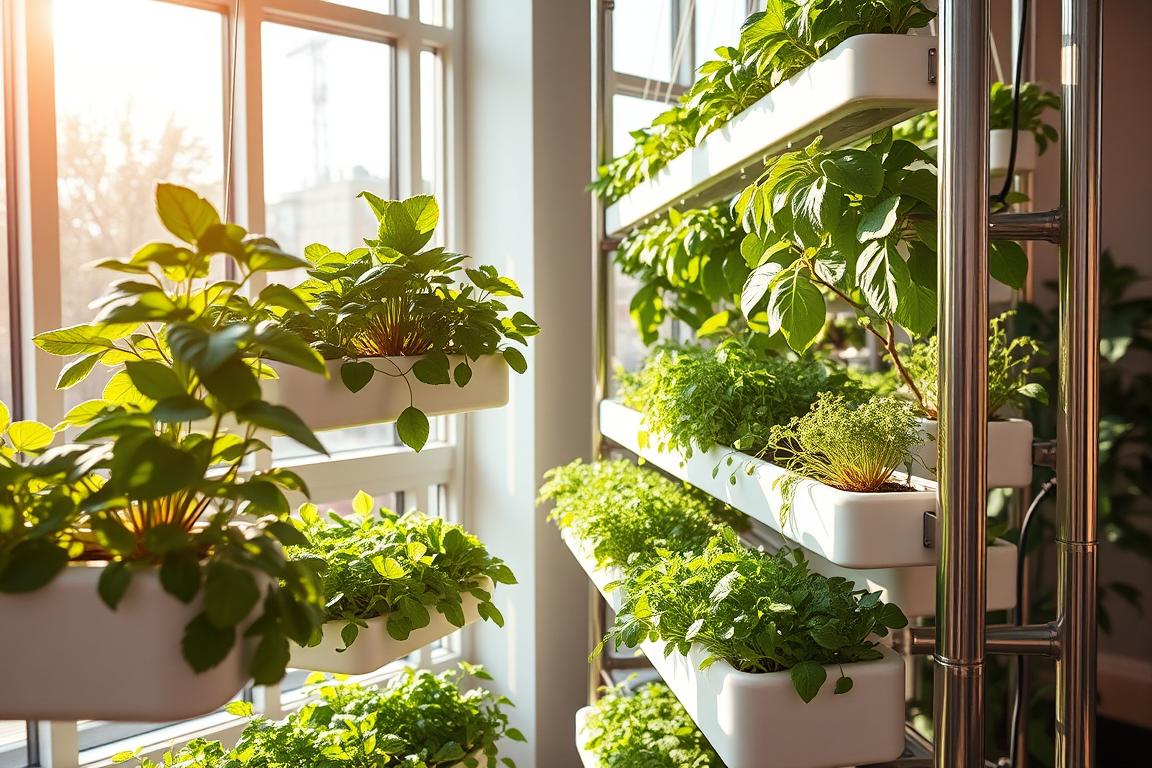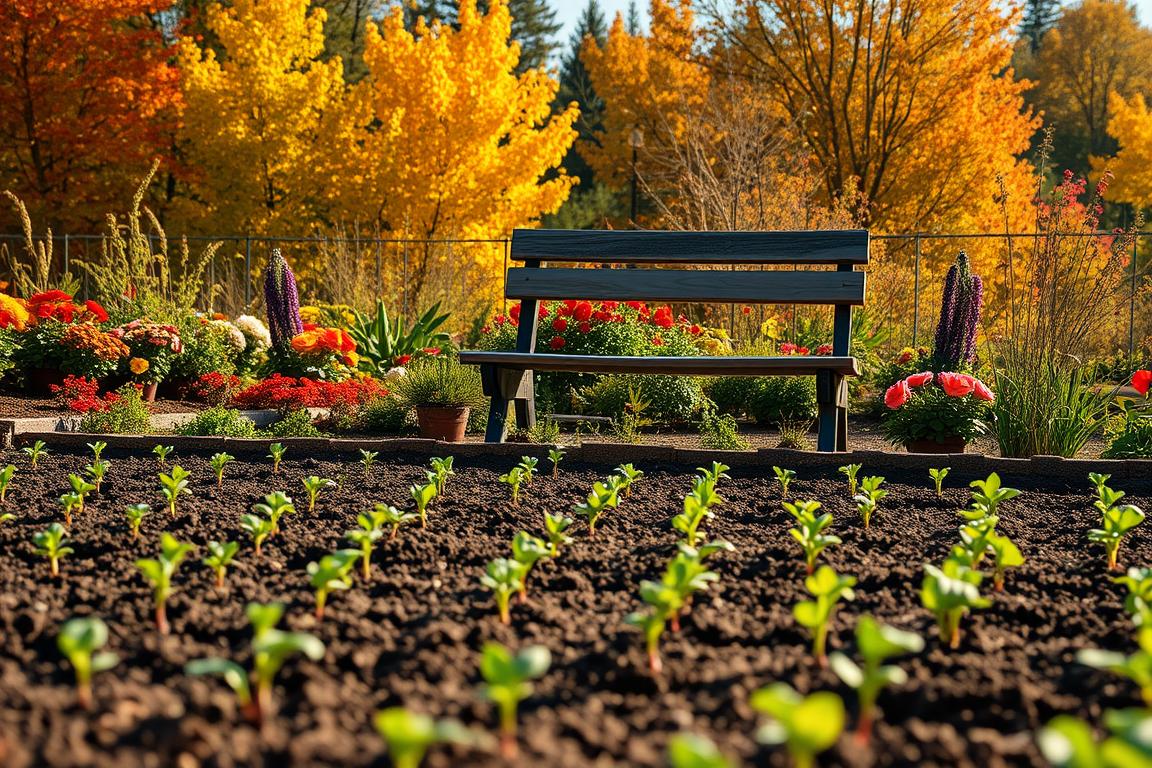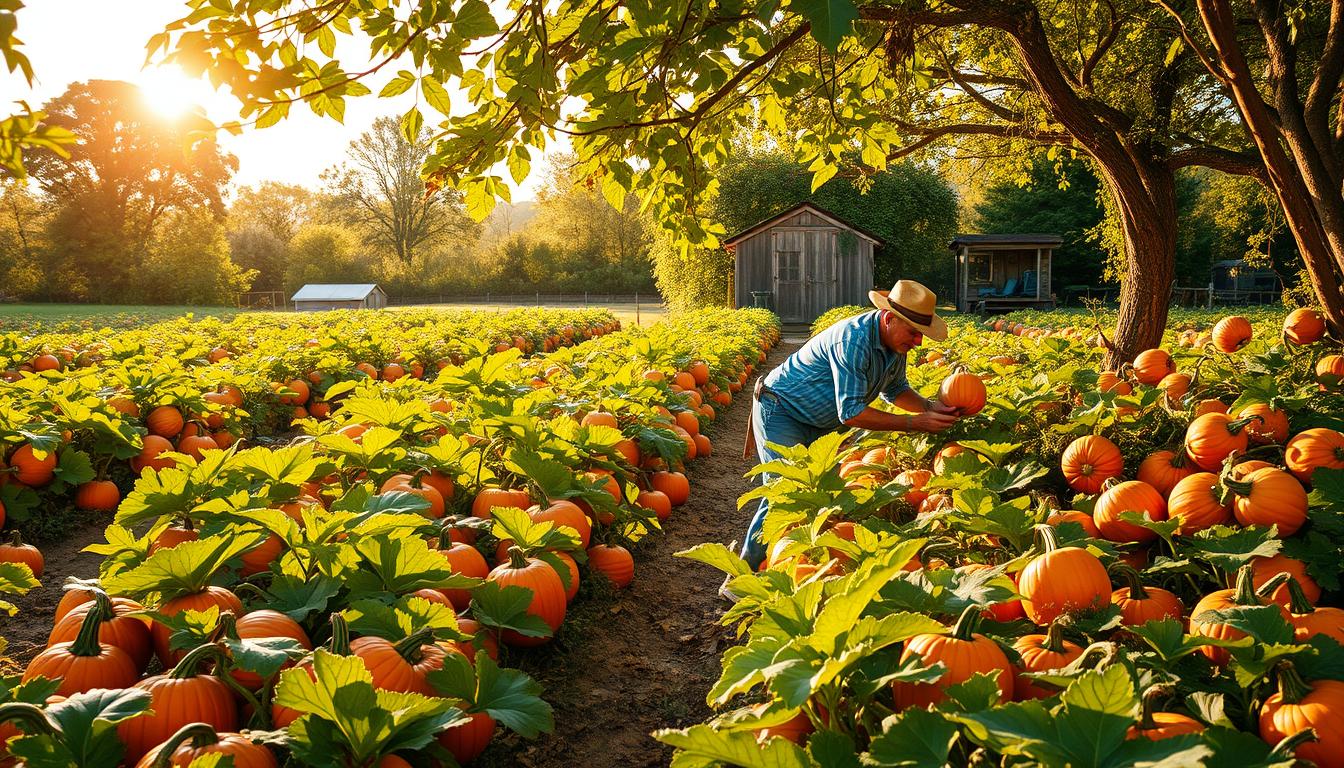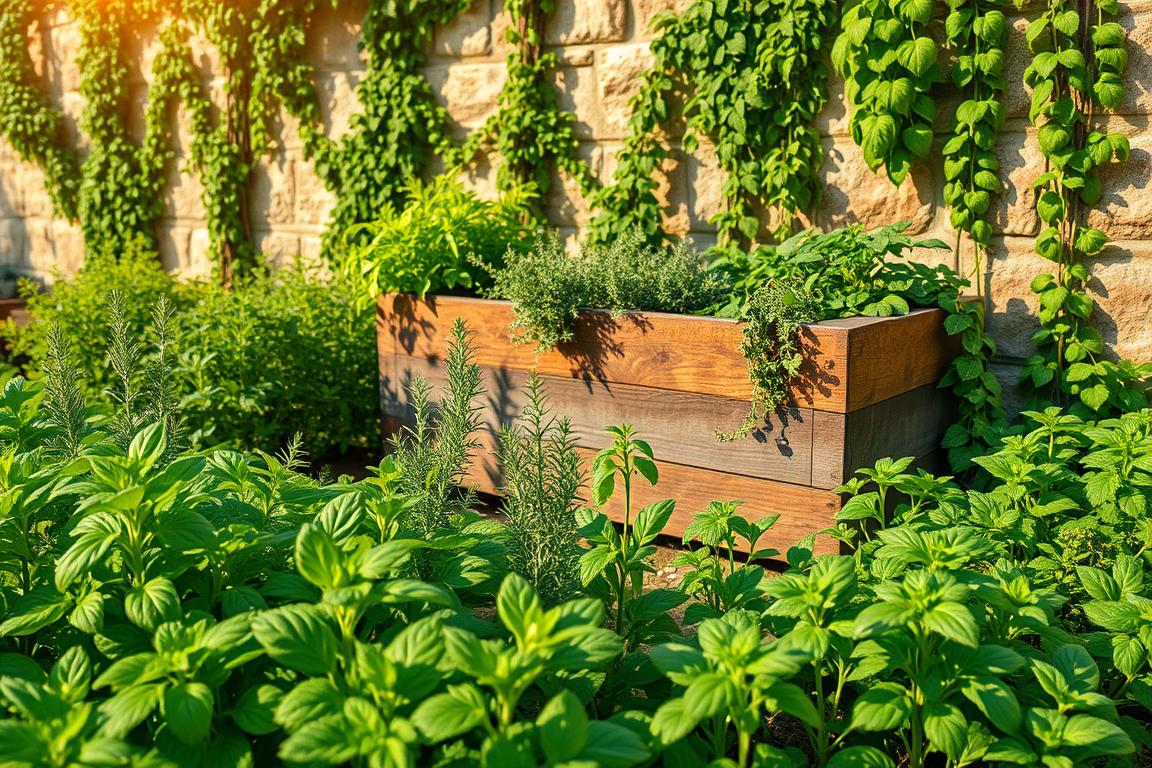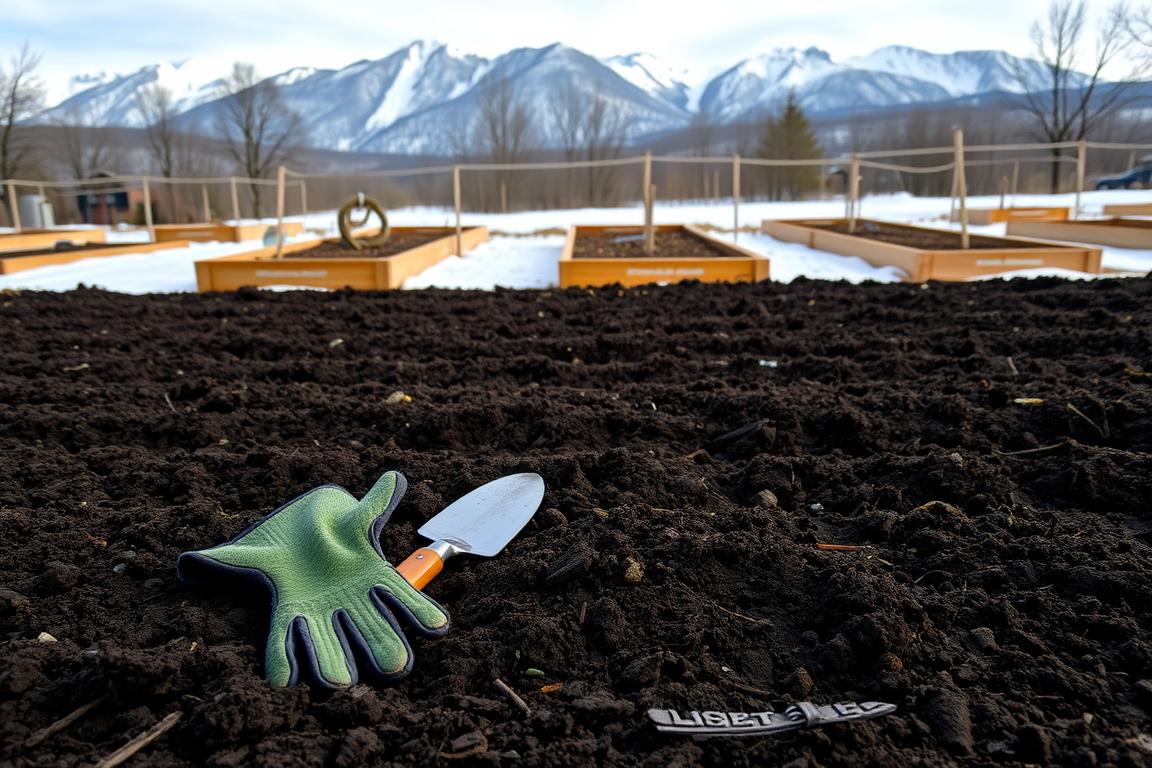We’re excited to explore the world of hydroponic gardening. It’s a way to grow plants without soil. This method allows for year-round production and can use less water than traditional gardening.
Hydroponics gives plants the nutrients they need right to their roots. This leads to faster growth and higher yields than traditional farming. It’s great for urban areas where space is tight, as it supports indoor gardening and vertical farming.
As we dive into sustainable gardening, we’ll cover the basics of hydroponic systems. We’ll also show you how to start your own hydroponic garden at home.
Key Takeaways
- Hydroponic gardening is a soil-free method of growing plants.
- It allows for year-round production and is water-efficient.
- Hydroponics enables faster growth rates and higher yields.
- It’s ideal for urban areas with limited space.
- Setting up a hydroponic garden at home is straightforward.
The Science and Benefits of Hydroponic Gardening
Hydroponics is a way to grow plants in a nutrient-rich solution, not soil. It makes gardening more efficient and productive. Plants grow faster and produce more.
How Plants Thrive Without Soil
In hydroponics, plants get nutrients directly through their roots. These roots are in a solution full of nutrients. This method helps plants grow strong and healthy.
Why Hydroponics Produces Higher Yields
Hydroponics can grow more plants than traditional farming. It controls light, temperature, and humidity. For example, grow lights give plants the right light, even without sun.
| Crop | Traditional Yield (kg/m²) | Hydroponic Yield (kg/m²) |
|---|---|---|
| Lettuce | 2-3 | 4-6 |
| Tomatoes | 5-7 | 10-15 |
| Cucumbers | 3-5 | 8-12 |
Year-Round Growing Regardless of Season
Hydroponics lets us grow plants all year. It controls the growing environment. This means crops can grow continuously, not just in certain seasons.
The benefits of hydroponic farming are clear. It’s efficient, grows more plants, and can grow crops any time. As we keep improving hydroponics, gardening becomes more sustainable and productive.
Choosing the Perfect Hydroponic System for Your Home

To start your hydroponic journey, you need to pick a system that fits your space, experience level, and the type of plants you want to grow. With various options available, understanding the strengths and weaknesses of each system is crucial for a successful harvest.
Deep Water Culture: The Simplest Approach
Deep Water Culture (DWC) is one of the most straightforward hydroponic systems. It involves suspending plant roots in a nutrient-rich water solution, providing a constant supply of oxygen and nutrients. This method is ideal for beginners due to its simplicity and low maintenance requirements.
Benefits of DWC include:
- Easy to set up and manage
- High oxygen levels for healthy root growth
- Suitable for a variety of plants
Nutrient Film Technique for Leafy Greens
The Nutrient Film Technique (NFT) is a popular choice for growing leafy greens. In an NFT system, plants are placed in long, narrow channels where a continuous flow of nutrient-rich solution is pumped. This technique is highly effective for crops like lettuce and herbs.
NFT is particular beneficial for:
- Growing a high volume of leafy greens
- Maximizing space efficiency
- Providing a consistent nutrient supply
Ebb and Flow Systems for Versatility
Ebb and Flow (or Flood and Drain) systems offer versatility by periodically flooding the growing area with nutrient solution and then draining it. This cycle provides plants with the necessary nutrients while also allowing for oxygenation.
Key advantages of Ebb and Flow systems include:
- Flexibility in growing a wide range of plants
- Efficient use of nutrients
- Ability to adjust the flooding cycle based on plant needs
Wick Systems: Perfect for Beginners
Wick systems are another simple and effective hydroponic method, ideal for those new to hydroponics. They work by drawing nutrient solution from a reservoir to the plants through wicks, eliminating the need for pumps.
Wick systems are great for:
- Low maintenance gardening
- Small-scale hydroponic setups
- Reducing energy consumption
Space-Saving Vertical Hydroponic Solutions
For those with limited space, vertical hydroponic systems offer a solution to maximize production. These systems stack layers of plants vertically, often using NFT or DWC methods.
Benefits of vertical hydroponics include:
- Maximizing space for more plants
- Increasing crop yields per square foot
- Aesthetic appeal for indoor gardening
By understanding the different types of hydroponic systems available, you can make an informed decision that suits your gardening needs and preferences. Whether you’re a beginner or an experienced gardener, there’s a hydroponic system that’s right for you.
Essential Components for a Successful Hydroponic Garden
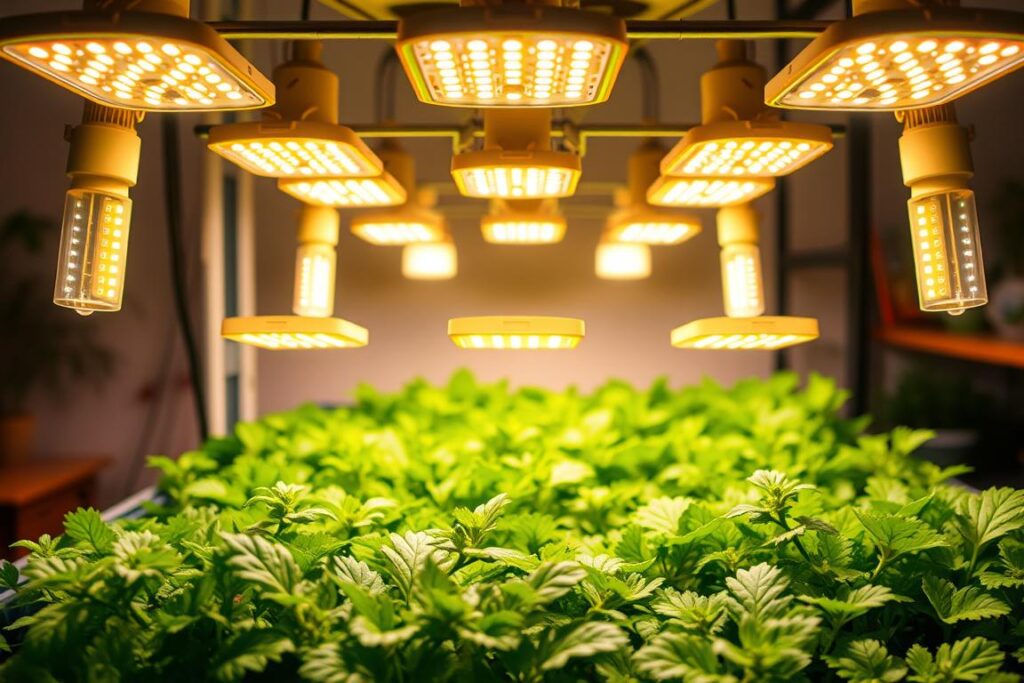
To make a hydroponic garden thrive, you need to think about several key parts. A good setup is more than just the hydroponic system. It’s about combining elements to create the best growing space.
Lighting Solutions
Lighting is crucial, even more so for indoor gardens. Natural light is great, but it’s not always there. That’s where LED grow lights shine. They’re energy-saving and can be set to match different plants’ needs.
Other lights like fluorescent and HPS are also used. But LEDs are popular for their efficiency and flexibility.
Mixing the Perfect Nutrient Solution
The nutrient solution is vital for a hydroponic garden. It needs to have all the nutrients plants need to grow. This includes big nutrients like nitrogen, phosphorus, and potassium, and smaller ones like iron and zinc.
| Nutrient | Function | Example |
|---|---|---|
| Nitrogen | Promotes leaf growth | Ammonium nitrate |
| Phosphorus | Supports root development | Monopotassium phosphate |
| Potassium | Overall plant health | Potassium nitrate |
Growing Medium Options
The growing medium is key too. It supports the roots and helps get nutrients to the plants. You can use Rockwool, Perlite, or coco coir. Each has its own benefits and drawbacks.
- Rockwool: Great for starting seeds, holds moisture well.
- Perlite: Helps with drainage, stops water from getting too wet.
- Coco coir: Eco-friendly, keeps moisture, and has good air flow.
Monitoring Tools
Monitoring tools are vital for keeping your garden in top shape. You’ll need pH meters, nutrient test kits, and temperature monitors. These tools help spot and fix problems early.
For example, a pH meter makes sure the nutrient solution is right for plants. It should be between 5.5 and 6.5.
Setting Up Your First Hydroponic Garden: A Step-by-Step Guide
Starting your first hydroponic garden is easy when you break it down. Follow this guide to grow a healthy and productive garden.
Designing Your Growing Space
First, design your growing space. Think about the space you have and how your system will fit. Make sure it’s well-ventilated and has enough light. For indoor gardens, you might need LED grow lights for the right spectrum.
System Assembly and Initial Setup
After designing your space, it’s time to put your system together. This includes a few important steps:
Connecting Water and Electrical Components
Connect the water pumps, aerators, and electrical parts as the maker says. Make sure everything is tight to avoid leaks and electrical problems.
Preparing Your Nutrient Solution
Creating the right nutrient solution is key for your plants. Use a balanced formula and follow the dosage instructions. Keep an eye on the pH levels and adjust as needed for your plants’ best health.
“The key to a successful hydroponic garden is in the details. Monitoring and adjusting your system regularly can make all the difference in the health and productivity of your plants.”
Best Plants to Start With: Lettuce, Herbs, and Greens
Beginners should start with lettuce, herbs, and other greens. These plants are easy to care for and grow well in hydroponics. They also grow fast, so you can enjoy your harvest sooner.
| Plant | Nutrient Requirements | Growth Period |
|---|---|---|
| Lettuce | Balanced NPK | 20-30 days |
| Basil | High Nitrogen | 20-30 days |
| Kale | Balanced NPK | 30-40 days |
Daily Maintenance and Troubleshooting Common Issues
Keeping up with daily maintenance is vital for your garden’s success. Watch the system, check for pests, and keep nutrient and pH levels right. Knowing about common problems like nutrient shortages, pH issues, and pests helps you fix them fast.
- Monitor nutrient levels and pH daily.
- Check for signs of pests or disease.
- Ensure adequate lighting and ventilation.
By following these steps and staying alert, you can enjoy a rich harvest from your hydroponic garden. Happy gardening!
Conclusion
Hydroponic gardening is a sustainable and efficient way to grow food. It’s perfect for urban gardening. This method offers many benefits, like better efficiency, higher yields, and constant production.
Hydroponic gardening changes how we grow food, even in small spaces. With the right setup, we can grow many crops. This means we can have fresh, home-grown food all year, no matter where we live.
Hydroponic gardening is key to sustainable farming. By learning about hydroponics and keeping the right growing conditions, we help the environment. Plus, we get to enjoy the fresh produce we grow at home.
FAQ
Q: What is hydroponic gardening?
A: Hydroponic gardening grows plants without soil. It gives plants nutrients directly to their roots. This method makes plants grow faster and produce more than traditional farming.
Q: What are the benefits of using hydroponics?
A: Hydroponics is very efficient and can grow more plants than traditional farming. It’s great for cities with little space. It lets people grow plants indoors and up high.
Q: How do I choose the right hydroponic system for my home?
A: Pick a hydroponic system based on your space, the plants you want, and your experience. Look at Deep Water Culture, Nutrient Film Technique, and Ebb and Flow Systems.
Q: What are the essential components for a successful hydroponic garden?
A: A good hydroponic garden needs lighting, a nutrient solution, a growing medium, and tools to monitor it. LED grow lights are key for indoor gardens. Rockwool and Perlite are good for growing plants.
Q: How do I maintain optimal growing conditions in my hydroponic garden?
A: Keep your garden healthy by checking it daily. Look for pests and make sure nutrients and pH levels are right. Knowing how to fix common problems helps too.
Q: What plants are best for beginners to grow in a hydroponic garden?
A: Start with easy plants like lettuce, herbs, and greens. They’re simple for beginners.
Q: Can I use hydroponics to grow any type of plant?
A: Hydroponics works for many plants, but some do better than others. Leafy greens, herbs, and some veggies grow well in hydroponics.
Q: How do I mix the perfect nutrient solution for my hydroponic garden?
A: To mix the right nutrient solution, balance the micronutrients. Use a high-quality hydroponic nutrient solution for best results.
Q: What is the role of grow lights in hydroponic gardening?
A: Grow lights, like LED lights, are vital. They give plants the light they need, which is crucial for indoor gardens.


